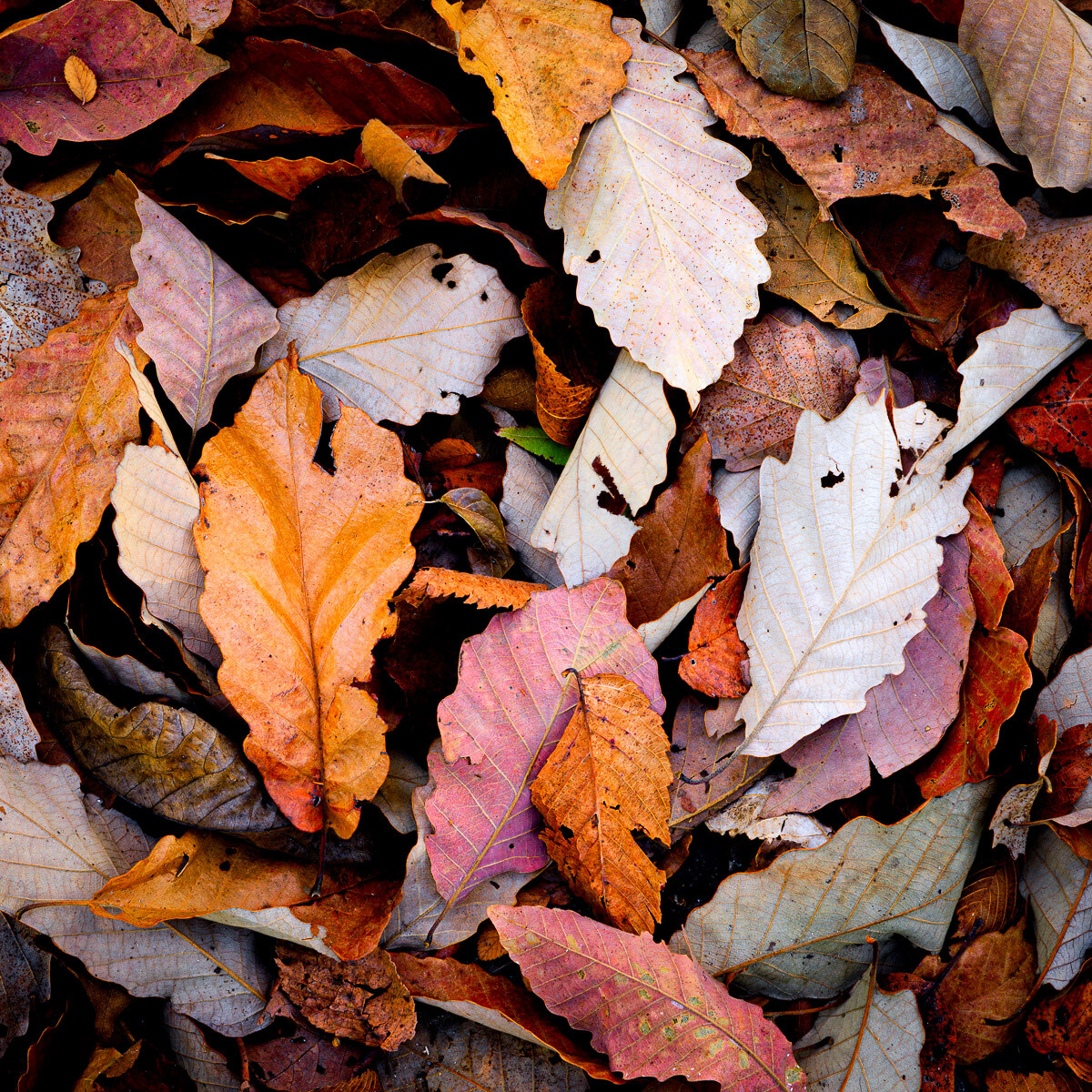
After photographing last week’s cypress tree, I packed up my gear and started putting it in my truck to head home. As I closed the door, I noticed all these autumn leaves that had fallen to the ground. As I looked at them, I began to notice the variety of shapes and color tones and realized I had found another subject to photograph.
I grabbed my camera and 24-70mm lens and, handholding the camera, began to move around the area looking for a composition. I would look through the viewfinder, assess, take a few steps, and look through the viewfinder again and reassess. I repeated this process for about 15 minutes before I finally found a composition I was pleased with. Then, I set up my tripod.
For this image, I needed complete depth of field, and this posed a little bit of a challenge because the leaves were not all on the same plane; rather, they were layered as newer leaves fell on top of the older leaves. The focal length of the lens, combined with the closeness of the leaves to the lens, limited the available depth of field to just a few inches.
With the back of my camera, and thus the camera sensor, as parallel as possible to the layers of leaves, I selected an aperture of f/11, which would provide sufficient depth of field while maximizing sharpness. Occasionally, a gust of wind would blow through and rustle the leaves slightly, so I waited until the leaves were completely still before I pressed the shutter button and captured the image.
Processing the image, I increased the color saturation to bring out the subtle colors I could see in the leaves. Contrast was increased to separate the different layers of leaves, and a slight vignette was added. Finally, sharpening was applied to arrive at this finished image.